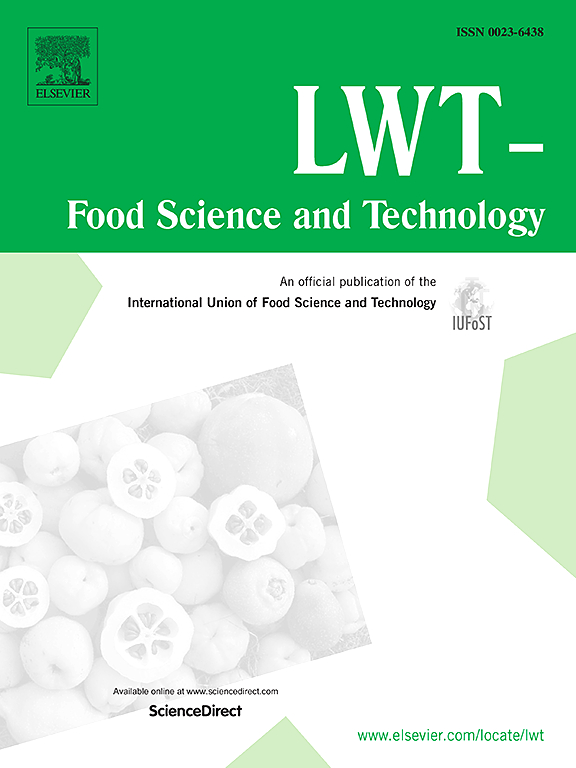Physicochemical and functional properties of anthocyanin microparticle encapsulated by ovalbumin and chitosan
IF 6
1区 农林科学
Q1 FOOD SCIENCE & TECHNOLOGY
引用次数: 0
Abstract
Anthocyanins (ACN) is a group of phytochemicals with various health promoting functions. However, the low stability limits their application. In this study, anthocyanin microparticles were prepared by encapsulating cyanidin-3-O-glucoside using ovalbumin-carboxymethyl chitosan (OC) complex. The final microparticles appeared in oval capsule form and had encapsulation rate from 44 to 52 %. The complex with 5 h of reaction time showed the highest free water content and fluidity, which were favorable for ACN encapsulation. The prepared microparticles had the best foaming capability (41.4 %), foaming stability (58.69 %) and viscoelasticity (G′ 17.8Pa at 10Hz). The linkage of the complex and encapsulated anthocyanin was mainly through hydrogen bond. The encapsulated cyanidin-3-O-glucosides presented higher thermal stability than the free form and reached 45 % of retention rate after 5 h of heating at 90°C. They were also more resistant to pH change and had over 60 % of retention rate at pH 5. Therefore, these properties provided a wide-ranging application of the prepared microparticle in different functional foods with enhanced stability of ACN and improved bio accessibility and bioavailability. The approach of this study could have the potential for applying to other unstable bioactives in functional food application.
求助全文
约1分钟内获得全文
求助全文
来源期刊

LWT - Food Science and Technology
工程技术-食品科技
CiteScore
11.80
自引率
6.70%
发文量
1724
审稿时长
65 days
期刊介绍:
LWT - Food Science and Technology is an international journal that publishes innovative papers in the fields of food chemistry, biochemistry, microbiology, technology and nutrition. The work described should be innovative either in the approach or in the methods used. The significance of the results either for the science community or for the food industry must also be specified. Contributions written in English are welcomed in the form of review articles, short reviews, research papers, and research notes. Papers featuring animal trials and cell cultures are outside the scope of the journal and will not be considered for publication.
 求助内容:
求助内容: 应助结果提醒方式:
应助结果提醒方式:


